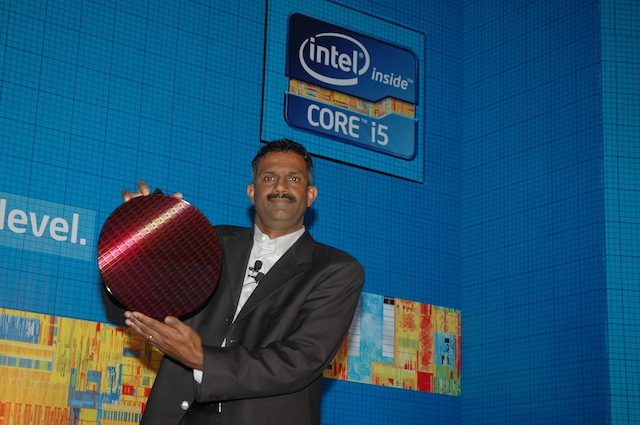
Even as the crowds flock to Vegas to check out CES, Intel has delivered a whammy of sorts at Mumbai by taking the veil off the second generation of its Core processor family. While there has been the usual talk of better performance, battery life and efficiency, the most spectacular change has been in the graphics department. To quote the release, this is “the first “visibly smart” microarchitecture to combine visual and 3D graphics technology with performance-leading microprocessors on a single chip. Incorporating the newly architected Intel HD Graphics on each 32nm die enables significant graphics performance improvements over the previous generation graphics, for both HD media processing and mainstream gaming.”
In simple English, that means that you could perhaps get by without having to invest in a graphics card for your machine (do note the “perhaps,” though, as we have not actually seen machines driven by the new processors in action.)
The new processor graphics technology will focus on areas like high-definition (HD) video, photos, mainstream gaming, multi-tasking and online socializing and multimedia. Every 2nd Generation Intel Core processor will come with inbuilt technologies like Intel HD graphics, and going by what we are hearing, these onboard graphics might actually be pretty good and a far cry from earlier efforts that were just par for the course for viewing video and messing with higher Windows settings but came a cropper when high end games came into the equation. New features in the processors include Intel Quick Sync Video, a new version of Intel Wireless Display (WiDi) which adds 1080 HD and content protection for those beaming HD content from their notebooks to televisions, and QuickSync Video which makes editing and sharing video literally a snap – a 4 minute HD video that used to take 4 minutes to convert to play on an iPod would now take just 16 seconds.
Intel announced announced more than 20 processors, wireless adapters and chipsets, including the new Intel Core i7, i5 and i3 processors, Intel 6 Series chipsets, and Intel Centrino Wi-Fi and WiMAX adaptors. As to when we can actually expect products with these running in them, well, here is the release again: “More than 500 laptop and desktop PC platform designs are expected from all major computer makers worldwide based on these products. The quad core based systems will be available in early to mid January timeframe with additional dual core versions in February.”
We are waiting for them. And for the graphic cards manufacturers’ reply. For a reply will come. Depend on it.
Too much CES around you? Subscribe to OnlyGizmos without CES (RSS). You can also subscribe to CES only RSS.




